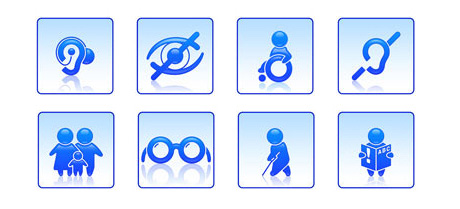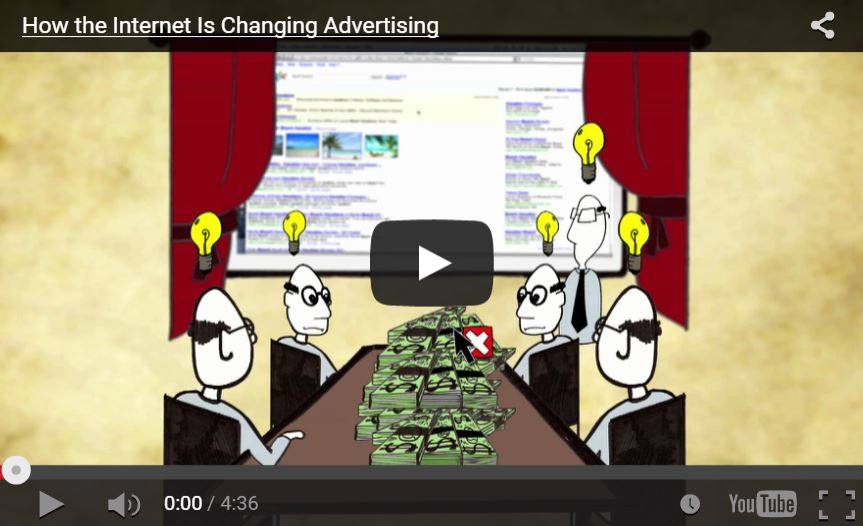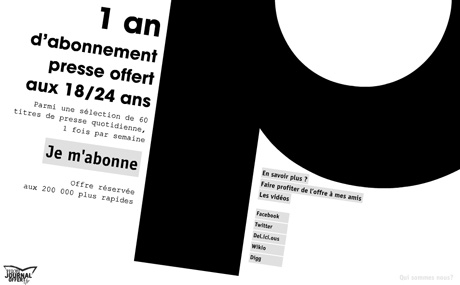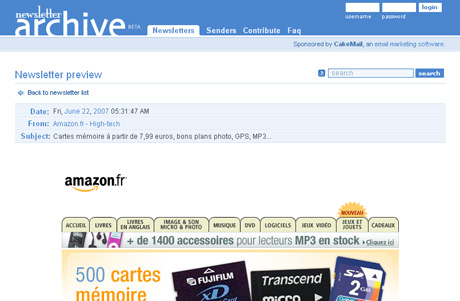Blog
Should my website be accessible?

I have been asked a question about accessibility recently, and I realized it has been a long time since I’ve last heard about it. A way too long time. Accessibility means building something -a cinema, a concert hall, a shopping mall, a website, etc.- usable by persons with disabilities. Usability is the beginning of an accessible process: isn’t our job to make sure everyone can use our applications? Though it is just one step further. Isn’t it just normal? Why couldn’t a person with disabilities read a website, when she can enter a cinema, because nobody thought of making it readable for her? In this article, I decided to make accessibility a little more concrete. How? Well, I spent 1 hour browsing the Web with a text-only browser, Lynx. The conclusion of this article introduces to accessibility basic best practices by WAI.
How the Internet changed advertising

A colleague at Adviso has shared this cool video with us last week. It briefly goes through the history of communication, from the invention of alphabet to advertising online, and it explains How the Internet changed advertising. What I particularly likes about this video is that it shows new media (Internet) = new ways of advertising. And I especially like them saying it has to be contextual (this is a strong belief of mine): to visitors needs, interests and interactions. The 2 rules to keep in mind from this video: 1. Trust the power of contextual, 2. To be granted with attention, offer interesting contents.
Multiple OR conditions in Survey Gizmo

During the last days, I have been programming an online survey with Survey Gizmo. It was brand new for me, but I found the solution is very practical and quite intuitive. Though, I got myself blocked at one point, which kept me thinking hard for a few hours: how to implement multiple OR conditions for a page or a question?
Newspapers: Generation Y still loves you!

« Radio, what’s new / Radio, someone still loves you« , sang the famous rock-band Queen in their hommage to radio, by this time when TV was becoming more and more important in our lives. Well, today, we could sing the same old song about newspapers. There seems to be a common theory, according to which the Generation Y, born with the Internet, won’t buy newspapers anymore. Boring and unpractical, newspapers? Well, it quite looks like these theories were wrong. An initiative from the French newspapers has reached its 200 000 readers quota, which is quite a lot knowing that the operation started on… the 27th October! Want to know more about this good move?
Solution for newsletters benchmarks

Let’s not let newsletters aside, and go on talking about it, as there are son many things to say! Studying email newsletters best practices and optimal width lately, I have just discovered a new online tool. As useful as Email on Acid, and as well as free and intuitive, Newsletter Archive is a good way to build a benchmark of significative newsletters without spending a thousand hours on it (and transforming your email box in an over-spammed list). The concept is very simple: visitors are invited to share the newsletters they receive, and so the website can build a impressive database of newsletters. If you are looking for a benchmark, you can browse by period (the website started gathering newsletters in May 2009) and by sender. So, basically, if you have done your competition analysis, you can browse for their newsletters.
What is an email ideal width?

Adviso has just conducted some research about ideal email width, and here are the main points of the article published on the blog, translated in English for your convenience. Of course, every agency and webdesigner has at least once been confronted to that question: how wide should my newsletter be? That’s a very good question, because a few more or less pixels can change a lot, and display a horrible horizontal scrollbar on your beautiful content! Anyone can find a lot of figures on Internet, and it is quite easy to find that an email width should be between 500 and 700 pixels. A few months ago, I published another article on Adviso’s blog, with 12 best practices for email newsletters, based on Norman & Nielsen Group’s Email Newsletter Usability Report. Knowing the exact optimal size of a newsletter was the next step!